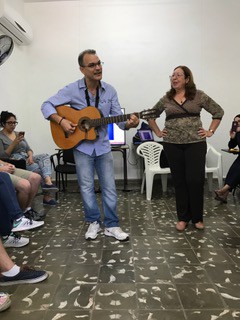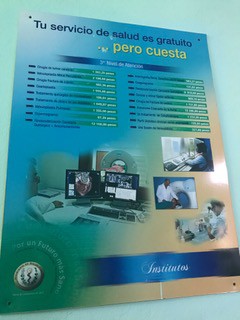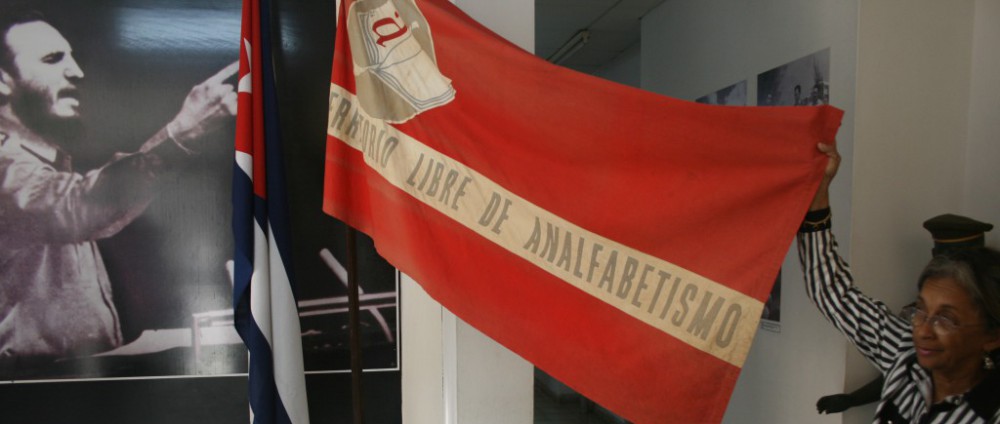The day began like all others at the residence; a breakfast made by Carlos served with freshly made mango juice. The bus picked us up and dropped us off at Centro de Estudios Martianos (CEM) for our last lecture while in Cuba. We took our seats in the small classroom and waited for our lecturer Rubin Morro.
He came in with a guitar case slung over his shoulder and a big pull string bag in his arms. By then we had already arranged ourselves in a circle and within minutes most of us had instruments in our hands. He taught us the different styles of dance and rhythm in the country like conga, rumba and the cha-cha. At the beginning, most of us were shy with the instruments we had never played before, but by the end we were comfortable with the support and enthusiasm of the lecturer.
Somehow the teacher had learned that there were some in our group who played back home. Even though we had already stayed past our scheduled time, everyone was more than happy to stay a bit longer for a jam session. Since we had spent the last couple hours playing and dancing to Cuban music, the lecturer wanted us to play and sing some American songs. We tried our best to come up with some we all knew, but all that could come to mind when we were put on the spot were songs sung by British bands. Of course, later that night we were all able to come up with more than a few. Mr. Morro was kind enough to play a song himself before we left for the day. I asked him to play a Silvio Rodriguez who is a Cuban artist known for his talent with a guitar. It was the perfect way to wrap up what I thought to be one of the best lectures we had at the CEM.

Later in the day we paid a visit to a local clinic. The building had a simple, clean look to it. Outside there was a bust of Jose Marti and a group of workers laying the foundation for a mini cement wall. A group of professors who were touring Cuba joined us for the tour of the clinic. We were ushered upstairs to a conference room for a short presentation.

The doctors giving us a small presentation about the healthcare system before the tour
Two doctors from the clinic explained that this was also a learning hospital. One of them had just come from administering a test to some students. The doctors explained the structure of the health system which sounded a lot like the overall structure in the U.S. I found it interesting that the doctor and nurse that were designated for any clinic or hospital were required to live in the area they serve in. If that were the case in the states, many people in the medical field would need to rent a U-Haul truck. Throughout the Q&A session of the presentation, questions were asked that pushed the doctors to find improvements that could be made to the system, but every time they only said things that were positive. Even though everything can be improved in some way, I appreciated the passion and love they had for what they did. That really came across when they explained that Cuba may not have all the new equipment in their clinics, but they had the love and compassion for people that made their system as successful as it was today.
The tour itself brought us through the lower level of the clinic. The doctors showed us the area for dentistry and physical therapy.

One of three chairs in the dentist area of the clinic.
Just like the outside of the building, the inside was simple and very minimalist. While some may see that as a red flag for the clinic not having the resources they need to treat the people, I looked at it as money being used for the right things even though the latter may be the case. Seeing this clinic made me appreciate what we have back home, but also left me wondering why hospitals in the states put so much money towards aesthetics.

A poster listing the prices of procedures that the government pays for if a citizen needs it.
